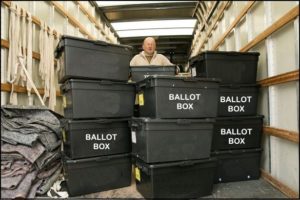The discipline of journalism is verification.
Journalists should always be able to spot fake news, propaganda and deceptive practices. They should label or exclude fakery from the public record.
Verification – Includes intro, misinformation – false or inaccurate
• G.co/factchecktools Fact Check Explorer // Politifact // Snopes // APfactcheck
• News literacy project https://newslit.org/
• InVID-project.eu Analysis – metadata from photo or video, location, rights, dates, detail, filters, keyframes
• Plugin for browser Fake News debunker
Reverse image search in InVID & Images.Google.com
Google Jigsaw team – Assembler – experiment in detecting fake photos
Video verification technique walkthrough
Coronavirus fact checking (Poynter)
‘Unsupported’: a powerful rating to flag COVID-19 conspiracy theories
https://multimedia.journalism.berkeley.edu/tutorials/osi_verification/.
Some politicians, particularly Donald Trump, are quick to cry “fake news” when a legitimate, factual news item upsets them. But there are several virulent strains of fake news. Probably the worst are those coming from Russian troll farms. This video from the CBS show “The Good Fight” tells part of the story:
Spotting propaganda and fake news
A home-grown example of faking fraud took place in September of 2016, when the (fake) “Christian Times Newspaper” shows “Randall Prince” with his supposed discovery of fraudulently pre-marked Clinton ballots in the Ohio primary. 
In fact, the picture was taken in 2015 in Birmingham, England, and was just about preparation for an upcoming election. The fake was caught on Snopes.com, a good place to check the veracity of online news.
Spotting fake news has become something of an arm-chair sport, and there’s even a game, “Facticious,” that shows some of the boundaries.
Another web site at the University of Pittsburgh helps provide standards to debunk fake news.
So, clearly, what is NOT journalism is the suite of “Disinformedia” sites, run out of Los Angeles, or the “ChristianTimesNewspaper” run out of a Baltimore suburb, with stories for example about voter fraud and Hillary Clinton in the months before the 2016 election.
But these American cyber news fakes were pretty small potatoes compared to the sophisticated manipulation behind Russia’s cyber campaign to disrupt the U.S. election, according to a variety of articles listed below. Thousands of full time expert hackers in Russia, China, North Korea and other countries are engaged in a constant attack on Americans, leading them (for example) to pick the weakest possible presidential candidates and to devalue democratic institutions.

From a Russian troll farm, summer 2018, according to CNN. Perfectly legit, according to RT. https://www.youtube.com/watch?v=oeO0B6MpraU (Oh really?)
The news about fake news:
The “Troll Farm” in St. Petersburg, Russia pushed American activists into fighting each other before the election.
Fake news and botnets: How Russia weaponized the web, Guardian, December 2, 2018
Securing Democracy — A dashboard that displays data about Russian propaganda efforts on Twitter in near-real time. Our analysts use the dashboard and other sources to discover Russian propaganda themes.
Russian Television (RT.com) says that the Walk Away campaign was not created by Russians.
Does journalism need to change?
In the wake of the COVID 19 pandemic and the 2020 Black Lives Matter protests, some people are asking whether journalism needs to change the basic premises of news coverage.
Candis Callison and Mary Lynn Young, who wrote Reckoning: Journalism’s Limits and Possibilities say that journalists are trained to ask who, what, where, why, when and how. But a question that doesn’t often make it into the news is this: how do we want to live together?
Margaret Sullivan, in a June 7, 2020 Washington Post op-ed, insists that journalism is not “just the facts” stenography:
Every piece of reporting — written or spoken, told in text or in images — is the product of choices. Every article approaches its subject from somebody’s perspective. Every digital home page, every printed front page, every 30-minute newscast, every one of the news alerts blowing up your phone, every radio talk show is the product of decision-making. We choose what to focus on, what to amplify, what to investigate and examine.
That’s why the simplistic “just the unadorned facts” can be such a canard. And that’s why the notion to “represent all points of view equally” is absurd and sometimes wrongheaded. “Journalism is not stenography” is a refrain from an astute editor I know.
The real answer is to make better, wiser choices — ones that best serve our important mission to find and tell the truth.
Margaret sullivan
